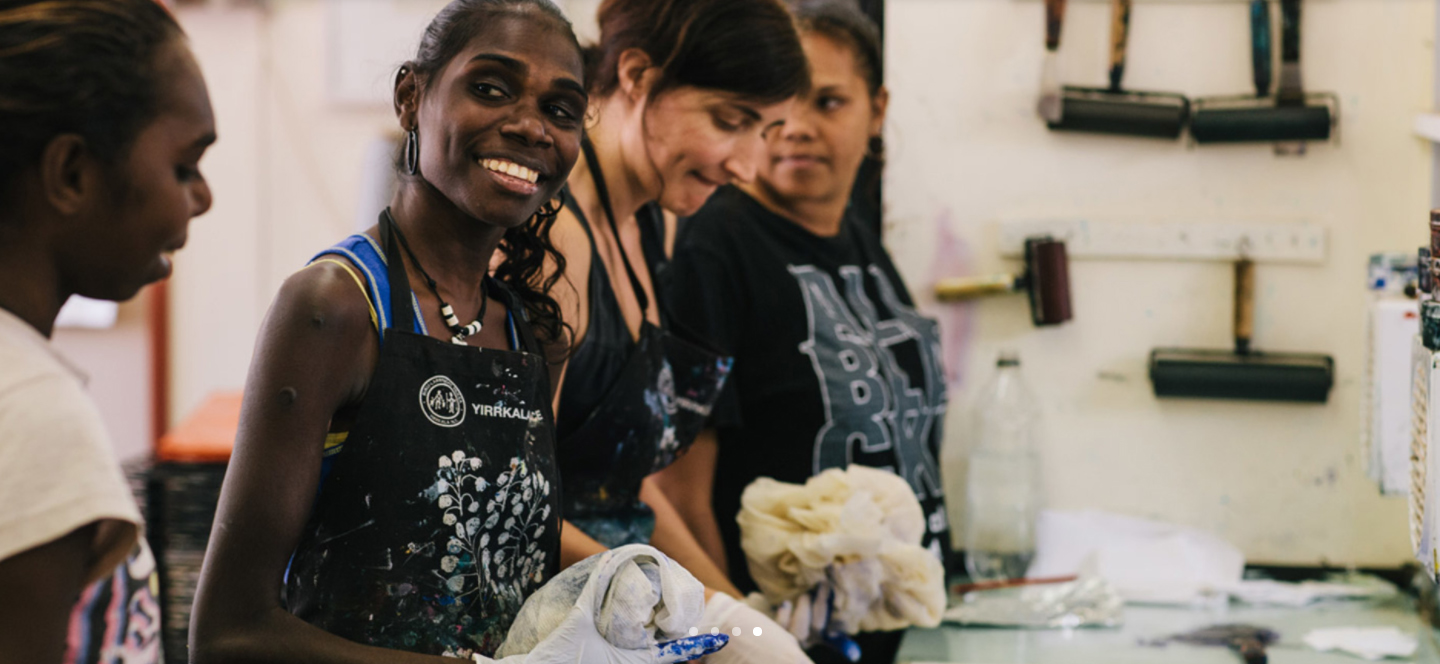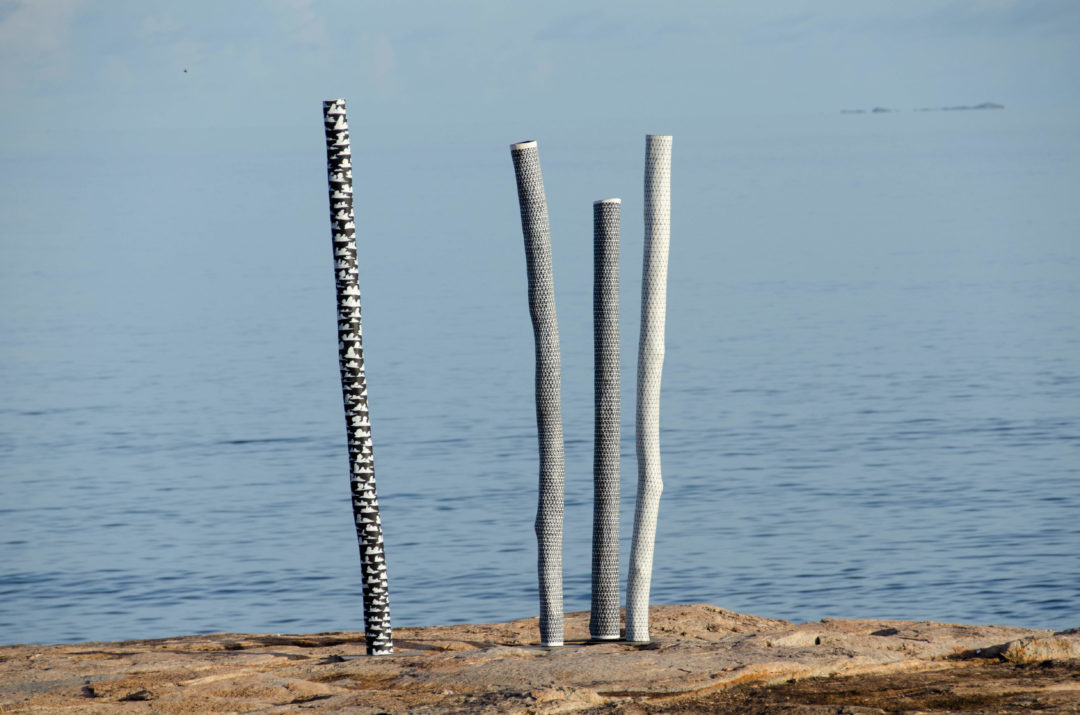Grow your business with the Discover newsletter
Logistics advice & insights straight to your inbox
Subscribe now
In 1976, a visionary group of Yolngu artists established Buku-Larrnggay Mulka to support artists across the 25 homelands in north-east Arnhem Land.
Buku-Larrnggay Mulka (Buku) is an extraordinary and busy place. It consists of two divisions: the art centre that is the commercial arm of the operation, and the Mulka Project that oversees an award-winning museum, vast collection of historic images, films and artworks, and also a digital production and recording studio. The centre employs more than 25 Yolngu staff that work across all areas of the operation.
The art centre supports the creative and cultural aspirations of its artists, many of whom have developed national and international reputations for producing innovative and exciting contemporary artworks. The art centre has built solid commercial and non-commercial partnerships with galleries and museums across the world.
Buku-Larrnggay is a Yolngu word meaning ‘the feeling on your face as it is struck by the first rays of the sun from the east’. This could be also interpreted as being struck by something awe-inspiring – just as how visitors feel when they encounter the amazing artwork and culture here.
Mulka means ‘a sacred but public ceremony’. The Mulka Project cares for the museum collection and extensive photographic and film archive. Mulka staff regularly attend and film important ceremonies which are then archived for future generations. This amazing resource is accessed by Yolŋu, researchers and visitors. Not all material is available to the public due to cultural protocols, with access managed by the centre’s Yolngu cultural directors.
Buku’s founding artists prescribed and enforced a set of artistic philosophies – the main guiding principle being that if you paint the land, you need to use the land. The extraordinary, culturally rich artworks sold at Buku are all made from natural materials that are sourced on country.
Yolngu people are entitled to express their sacred identity through art. The art centre supports more than 400 men and women of all ages. Artwork produced by the artists relates to their clan songlines and designs, including the Gumatj, Rirratjingu, Djapu, Manggalili, Marrakulu, Madarrpa, Gälpu, Dhalwangu, Dätiwuy, Ngaymil, Djarrwark, Djambarrpuyngu, Wangurri, Warramiri, Dhudi-Djapu, Gupapuyngu and Munyuku.
A handful of artists work in the art centre in Yirrkala, but most work from home in their communities. Artists collect their own materials such as bark and earth pigments. When an artwork is complete, the artist carefully wraps the work and then travels to Yirrkala to sell it to the art centre. During the wet season, when the roads are cut off by floodwaters, the artworks often arrive via charter planes.
The art centre buys up to 6,000 to 9,000 artworks each year. These items need to be documented, photographed and catalogued. Prices range from $25 for smaller items such as carvings or necklaces to $30,000 for a larrakitj (ceremonial pole). We strive to honour and support not just the high art makers, but also the craftspeople in the region.

The coordinator’s role is to act as a conduit between the artist and the art market. It is our job to nurture, support and promote artists by placing their artworks in the right segment of the market and/or project. We encourage our artists to produce high quality and innovative artworks. The high standard of work produced and exhibited has secured Buku’s excellent reputation in the marketplace.
Since early 2000, there has been an increased interest in Indigenous art in the international fine art market. We regularly receive enquiries from overseas collectors, galleries and public institutions who wish to visit the centre and purchase works.
Our main exports are yidakis (didgeridoos), larrakitj (ceremonial poles), nuwayak (bark paintings), gunga djämas (weaved goods), limited edition prints and dharpa (wood sculptures).
The yidaki is one of our top export items and we have significant markets in Japan, Germany, Switzerland and the United States. Other markets include multiple countries in Europe, Singapore, India and Turkey.
We are very selective in who we choose to partner with. We strive to always work with ethical, high quality commercial galleries and public institutions who share the same values and are invested in promoting Yolngu art and culture to the world.
Our work is fairly fragile and unusual in terms of its shape, size and weight. We spend a lot of time and care packing it. We’ve got a really amazing Yolngu team who are constantly having to problem solve and come up with clever packaging solutions. They really do an amazing job.
Once an artwork has been packed, we really count on DHL Express to look after it and deliver it to its destination. And with more than 20 to 30 commercial exhibitions scheduled over a year, reliable, fast and traceable logistics are of the paramount.

Wangupini Larrakitj (cloud motif on ceremonial poles) 2017 by Nawurapu Wunungmurra (c). Earth pigments on Stringybark hollow pole. Photo: Tim Acker. Courtesy Buku-Larrnggay Mulka Centre
We’ve always been really impressed with the professionalism, personalised service and excellent rates that DHL Express offers. Our team is always really impressed with the interest DHL and our account manager has in our business.
We’re sending culturally and artistically important artworks all over the world. We are a not-for-profit organisation and all profits are reinvested back into the art centre and artists. Our mandate is for Yolngu people to benefit economically from their art business and to also gain recognition for their extraordinary art and culture – and DHL understands this.
We at the art centre are the custodians of these works and in turn, DHL becomes the custodian when delivering this incredibly precious work.
The income generated by art has a powerful ripple effect for Yolngu people. Art money flows back in to remote communities and supports people staying in country. It helps keep the local community run stores open and enables people to buy vehicles which are a lifeline to those living in extremely remote locations. Being able to drive and attend important ceremonies keeps culture strong and supports people’s wellbeing.
Yolngu people truly embrace all those who wish to learn about their culture and art. Their beautiful and powerful artwork is a way to connect with the world and creates space for celebration and respect.
For more information about the Buku-Larrnggay Mulka Centre, visit yirrkala.com